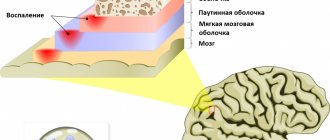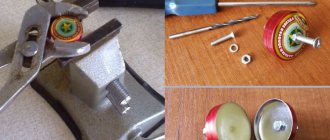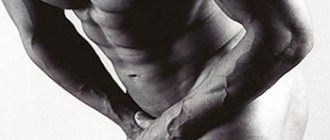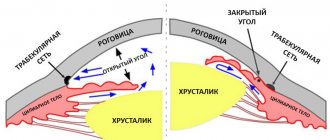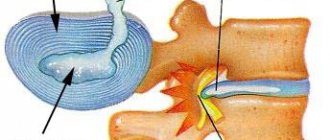Unpleasant sensations and pain in the head and eyes are familiar to everyone. This condition often only indicates overfatigue of the visual analyzer, especially during prolonged work at the computer. Therefore, when the eyes hurt when the pupils move, and a person feels dry, as if sand had gotten into them, at the first stage it is necessary to give the eyes a rest (especially if you feel pain in the eyes when working at the computer or reading). However, if this does not help, then it is necessary to exclude pathological processes that manifest themselves with similar symptoms from the visual analyzer. It can be:
- 1. Increased intraocular pressure. In this case, a person most often feels that the eye hurts inside. This condition can be transient and accompany, for example, migraine or brain pathology, or it can be permanent and lead to gradual retinal detachment associated with glaucoma. In this case, the eyeball becomes rocky when palpated.
- 2. Infectious diseases of the eyes, brain and intoxication. Inflammation of the mucous membrane of the eye - conjunctivitis - is a common cause of pain when blinking and at rest. Pain in the orbit that occurs when moving the eyes indicates that the eye muscles and nerves are involved in the inflammatory process. This situation can occur both during intoxication due to common flu or acute respiratory infections, and during such serious diseases as meningitis, encephalitis, etc. Inflammation of the paranasal sinuses (sinusitis or sinusitis) can cause pain in the nose and eyes. With the development of complicated forms of these diseases, pus can penetrate into the orbital cavity.
- 3. Trauma to the eyeball, head and facial skull can lead to pain in the orbits and eyes. The reason is direct mechanical impact or the entry of foreign objects into the visual analyzer. A concussion may also cause pain in the forehead or temple when moving the eyes.
- 4. Diseases of the eye appendages. A number of diseases can lead not to an eye problem, but to inflammation of the lacrimal glands (dacryocystitis) or eyelids (maybeitis).
What to do if you have a headache when you move your eyes?
Headache when moving the eyes and at rest (whether it is pain in the eyes when reading or working on a computer) is an extremely unpleasant condition for a person. Therefore, it is urgent to take a painkiller from the group of non-steroidal anti-inflammatory drugs. The next step in helping a person is to see a doctor. If there are signs of a general infectious disease (flu, acute respiratory infections), then a general practitioner will be able to provide adequate medical care. In other cases, consultation with an ophthalmologist and often a neurologist is necessary. If the cause of pain in the eye is a foreign object or injury, in no case should you rub your eyes or try to reach such an object directly with your fingers. It is necessary to rinse your eyes generously with clean water. If this does not produce results, seek medical help immediately.
Diagnostics
Diagnostic measures are carried out by a neurologist. If necessary, an infectious disease specialist, therapist, surgeon, and other specialists are involved in the examination. The purpose of the conversation with the patient is to clarify complaints, study the nature of the headache, and collect anamnestic data. The results of an external examination are often uninformative. In case of injuries, wounds, abrasions, local swelling, and bruises are found. In case of vascular pathologies, an increase or decrease in blood pressure is determined.
Assessment of the somatic status, identification of various syndromes (intoxication, infectious-toxic, characteristic of impaired renal function and respiratory system) allow us to suggest a possible cause of the symptom and determine the direction of further examination. The following techniques can be used:
- Neurological examination
. Muscle strength, sensitivity, and reflexes are assessed. The study is informative for meningitis, arachnoiditis, encephalitis, intracranial hypertension, and in the late stages of atherosclerosis. - X-ray of the skull.
Most indicative of injuries. Allows you to avoid damage to hard structures (fractures of the arch and base). In chronic intracranial hypertension, including in patients with arachnoiditis, osteoporosis of the dorsum sella and digital impressions are detected. - Electroencephalography.
Performed to identify and assess the severity of brain dysfunction. With convexital arachnoiditis, it may indicate the presence of foci of epileptogenic activity. - Ultrasonic methods
. Echoencephalography is used at the initial stage of the examination. It is mandatory for suspected TBI; it makes it possible to quickly confirm displacement of midline structures, cerebral edema, and hydrocephalus. Duplex and Doppler ultrasound are recommended for the study of cerebral circulation. - and MRI.
They are clarifying diagnostic methods. They are performed to assess the structure of brain tissue, determine the location and nature of focal changes. Contrast studies are effective in vascular diseases. - Lumbar puncture.
It is used to confirm meningitis, arachnoiditis, hydrocephalus of various origins, and to clarify the characteristics and severity of TBI. The resulting cerebrospinal fluid is sent for microscopy, PCR is performed according to indications, and inoculation is carried out on nutrient media. - Lab tests
. They help assess the condition of the body, diagnose atherosclerosis, inflammatory diseases, and general infections. If the symptom has an allergic etiology, special tests are performed to identify the allergen.
Consultation with a neurologist
Treatment for eye movement disorders
There are many reasons why the eyes hurt and there is a violation of their movement. However, this combination of symptoms indicates a severe pathology, where self-medication is inappropriate. Disorders of eye movements occur most often due to neurological pathology (diseases of the cranial nerves or circulatory disorders in the brain). An infectious process in the orbit can lead to a temporary disturbance in movement and a condition where the eye muscles hurt when moving upward (most often, such symptoms are observed with inflammation in the lower fornix of the orbit). Treatment of eye movement disorders can only be carried out by an ophthalmologist in joint consultation with related specialists (neurologists, neurosurgeons). If pain in the eye when moving the eyeball haunts you, contact the Neuro-Med clinic for help. Our specialists will advise you in detail on all issues, as well as prescribe suitable treatment.
Causes of pain in the back of the head
A severe headache in the back of the head never occurs without a reason. It can be a signal of diseases:
- spine;
- vascular system;
- neurological system.
Depending on the cause of the headache in the back of the head, it can be of a different nature and be accompanied by certain clinical manifestations, which must be clearly described to the doctor.
Pain in the back of the head due to osteochondrosis
If the neck and back of the head hurt, the reasons may be the presence of a disease such as osteochondrosis of the cervical spine. The disease manifests itself in the destruction of the discs of the cervical vertebrae, and pain appears constantly and is felt not only in the neck and back of the head, but also in the temples. They become more intense with head movements and may be accompanied by:
- tinnitus;
- nausea;
- coordination disorders;
- veil before the eyes and double vision.
More about osteochondrosis
Pain in the back of the head with hypertension
Hypertensive attacks are characterized by the appearance of bursting pain, which is accompanied by pulsation. They may appear when waking up after a night's sleep. In addition, it is observed:
- general weakness;
- dizziness;
- cardiopalmus;
- increased pain when trying to tilt your head;
- reduction of pain after sudden vomiting.
Pain in the back of the head with increased intracranial pressure
Increased intracranial pressure is characterized by:
- pressing, bursting pain in the occipital region or throughout the head;
- increased pain in bright light and loud sounds;
- heaviness in the head and pain in the eyeballs;
- vomiting, which does not reduce pain syndromes.
Pain in the back of the head due to cervical myositis
Inflammatory processes in the neck muscles caused by hypothermia or injury are characterized by pain symptoms that spread from the neck to the occipital, shoulder and interscapular areas. It appears when you move your head and is asymmetrical.
More about myositis
Pain in the back of the head due to occipital neuralgia
Neuralgia of the occipital nerve, resulting from hypothermia or accompanying osteochondrosis, is characterized by very strong shooting pains. They occur periodically, like attacks with any attempt to change the position of the head.
During rest, a slight pressing pain is felt in the occipital region.
Read more about occipital neuralgia
Pain in the back of the head due to vascular diseases
Spasms of the cranial arteries cause throbbing pain, which becomes stronger when trying to move the head and subsides somewhat at rest. The pain begins in the back of the head and eventually spreads to the frontal area. It is accompanied by a feeling of heaviness in the head and begins in the morning after waking up.
Sinus pain
Signs. Sinus pain is caused by inflammation of the area around the nose, inflammation in the sinuses. It is characterized by pressing, throbbing pain around the nose, under the eyes, and in the forehead. When bending or turning the head, the pain may intensify. The nose is stuffy and can't breathe. Fatigue and swelling of the mucous membranes of the sinuses and nasal cavity appear. The head may hurt until the underlying disease is cured.
Causes. Inflammatory process of the sinuses. Due to nasal congestion, there is a lack of oxygen in the brain, hence fatigue. Such pain can be complicated after a cold or allergy.
Treatment. The disease can be eliminated by taking antibiotics; for allergens, antihistamines should be taken and the cause of the allergy should be eliminated. You need to see a doctor.
Cluster pain
Signs. This type of pain, although rare, is very severe and most often affects middle-aged men. Severe throbbing pains appear at night, one side of the head hurts in the eye area. The pain continues for an hour; in severe cases, attacks can be repeated several times a day. Accompanied by redness in the eyes, the appearance of tears, and a reaction to bright light.
Causes. The causes of cluster pain have not been studied, but many scientists associate them with a disruption of human biological rhythms. Treatment. The pain will subside only after taking a strong painkiller. You must go to a medical facility and undergo an examination.
Migraine
Signs. Severe attacks of throbbing pain in one part of the head, lasting from 1-2 hours to several days. Often this pain is hereditary, affecting mostly women aged 25 to 35 years. A severe migraine is accompanied by nausea and vomiting, blurred vision, dizziness, drowsiness, and irritability. Before a migraine attack, a slight tingling sensation is felt throughout the body.
Causes. The cause of migraine is usually vascular disorders in the head and neck and fundus of the eye. During a migraine attack, the blood vessels in the head dilate and electrical activity occurs in the cerebral cortex. The pain is triggered by a stressful situation, mental stress and fatigue, sleep disturbance, changes in atmospheric pressure, menstruation or pregnancy in women, menopause.
Treatment. It is impossible to relieve migraine symptoms, but you can reduce them slightly. To do this, you need to retire to a quiet, darkened room, do acupressure, and a cold compress on the forehead. Sometimes, on the contrary, a warm shower or washing your hair with hot water helps. Traditional painkillers are of little help for migraines. Exercise and a healthy lifestyle can improve the condition.
Treatment
Headaches cannot be tolerated, so during attacks you should take analgesics. These can be drugs based on paracetamol, ibuprofen, ketorol and others that help a particular patient.
The main treatment for headaches is always aimed at their cause. If there are serious pathologies of internal organs, hormone therapy or chemotherapy, drugs for migraines or epilepsy, and drugs for heart disease are prescribed. Treatment is selected individually, taking into account the results of the examination and the general condition of the patient.
Dear patients!
Remember that only a qualified doctor can make an accurate diagnosis, determine the causes and nature of the disease, and prescribe effective treatment. You can make an appointment with our specialists or call a doctor at home by calling 8-(4822)-33-00-33 Be healthy and happy!
Tension pain
Signs . The most common headache pain is a mild pressing pain concentrated in the upper part of the head, which can spread to the entire head. It seems that the tense muscles of the forehead and eyes cannot be relaxed. The pain occurs and intensifies in the evening.
Causes. The main cause of such pain is the long position of the body in a stationary state, a forced posture when working at a computer and when driving a car. The neck, back, and head become numb, the muscles tense, and this gives rise to headaches. Stress and conflicts can also cause pain.
Treatment. Taking a painkiller tablet can help relieve this type of pain. Drinking soothing herbal infusions will also help relieve symptoms of stress. A little warm-up during work, staying in the fresh air will help you relax and the pain will subside. If pain occurs more often and its intensity increases, a doctor’s consultation is necessary.

